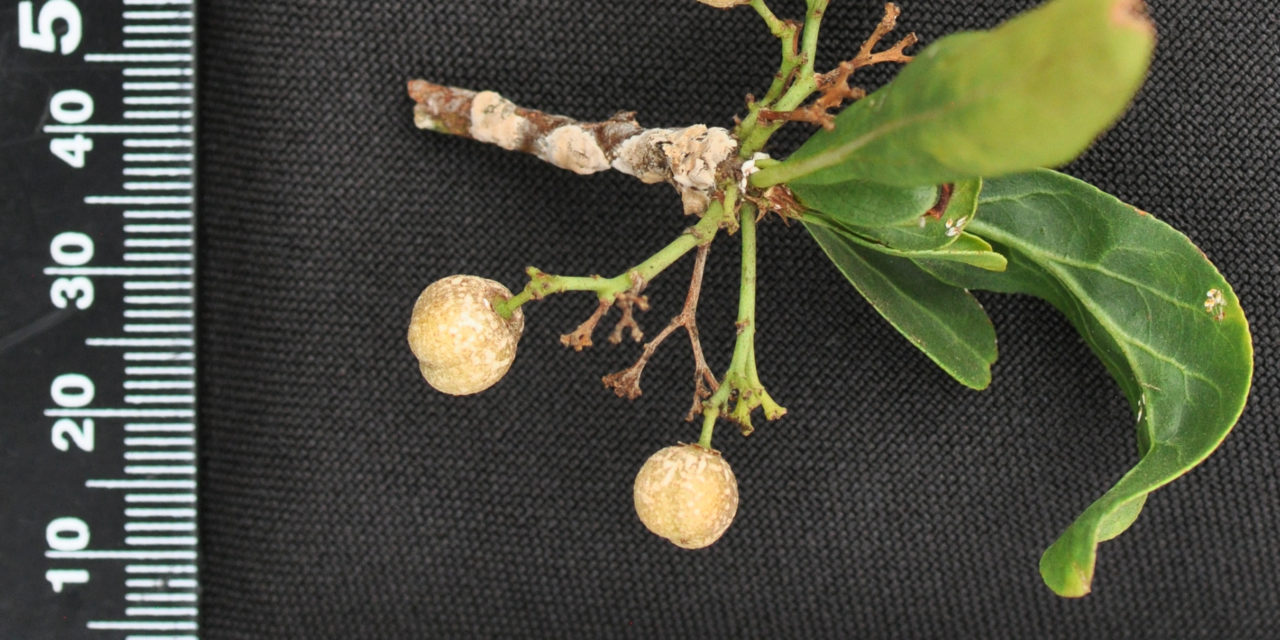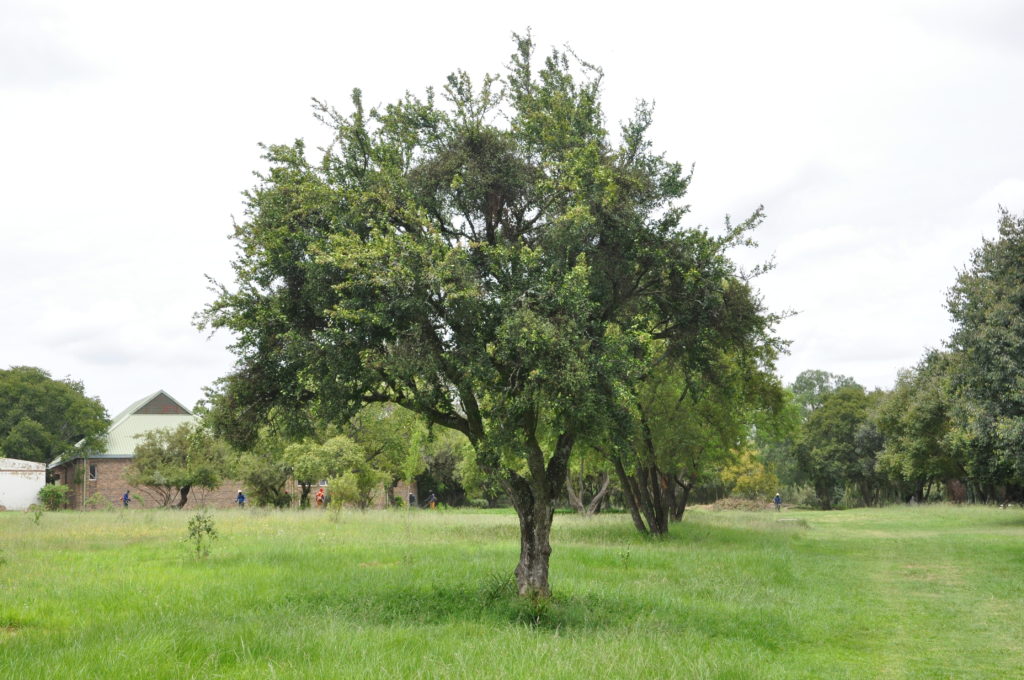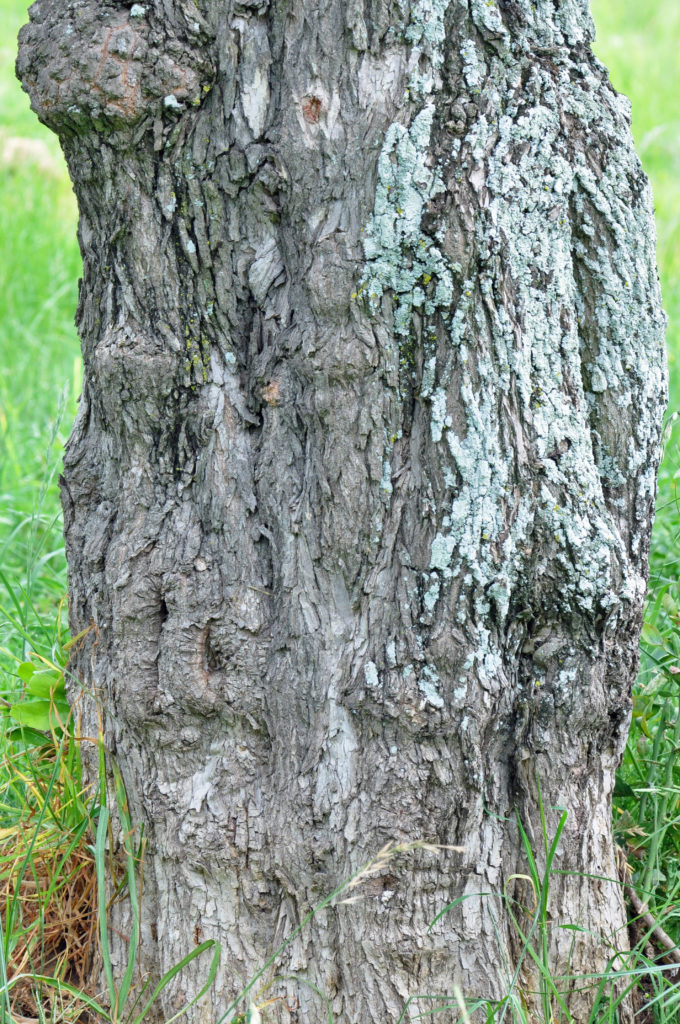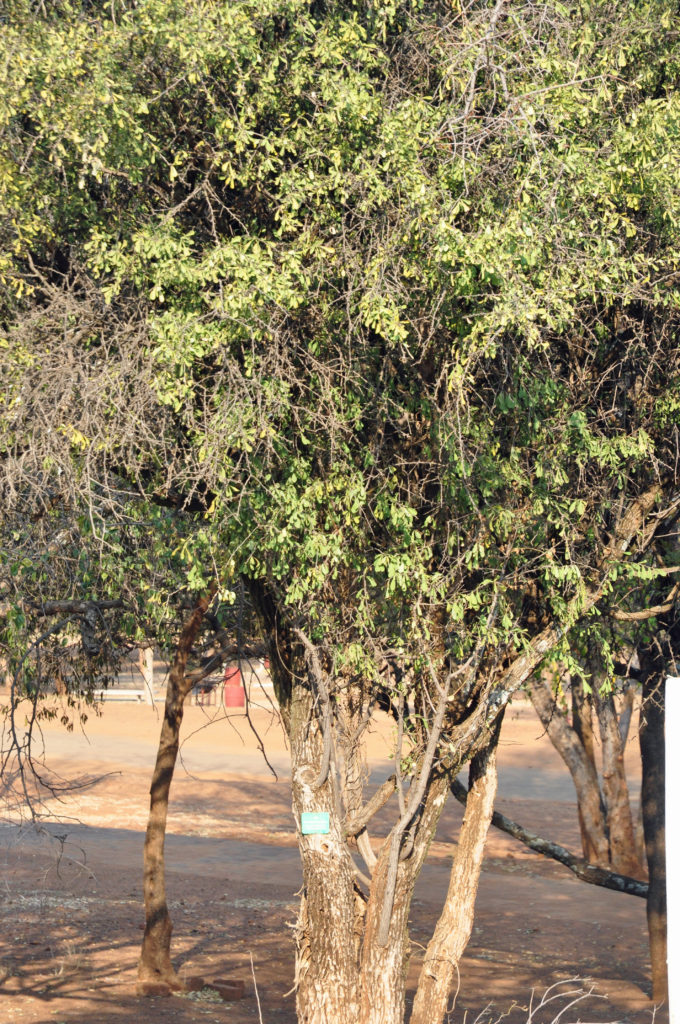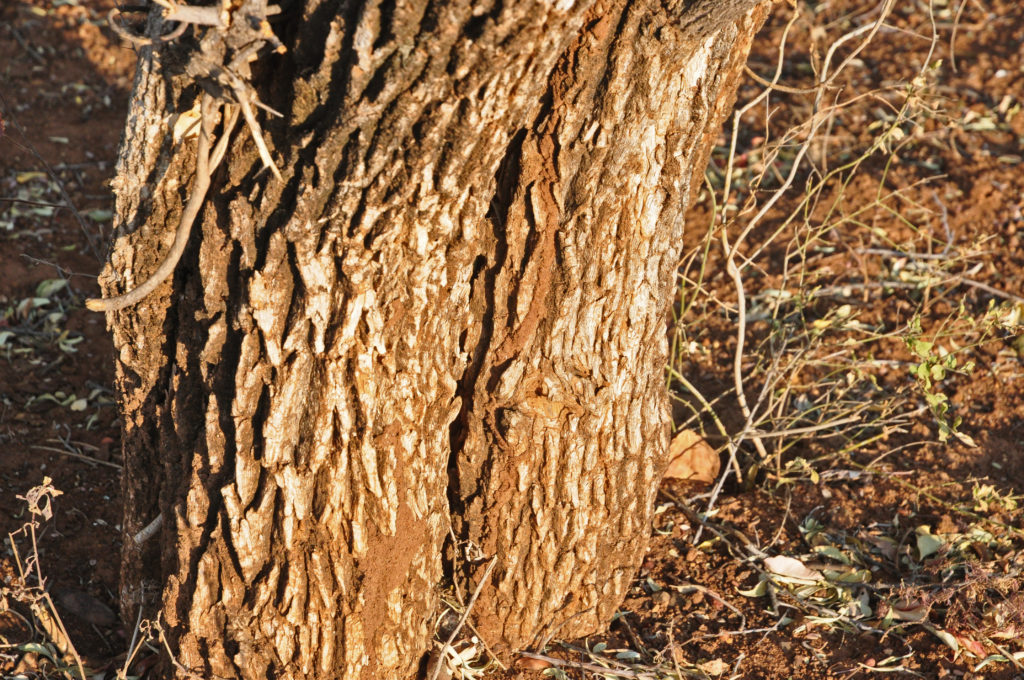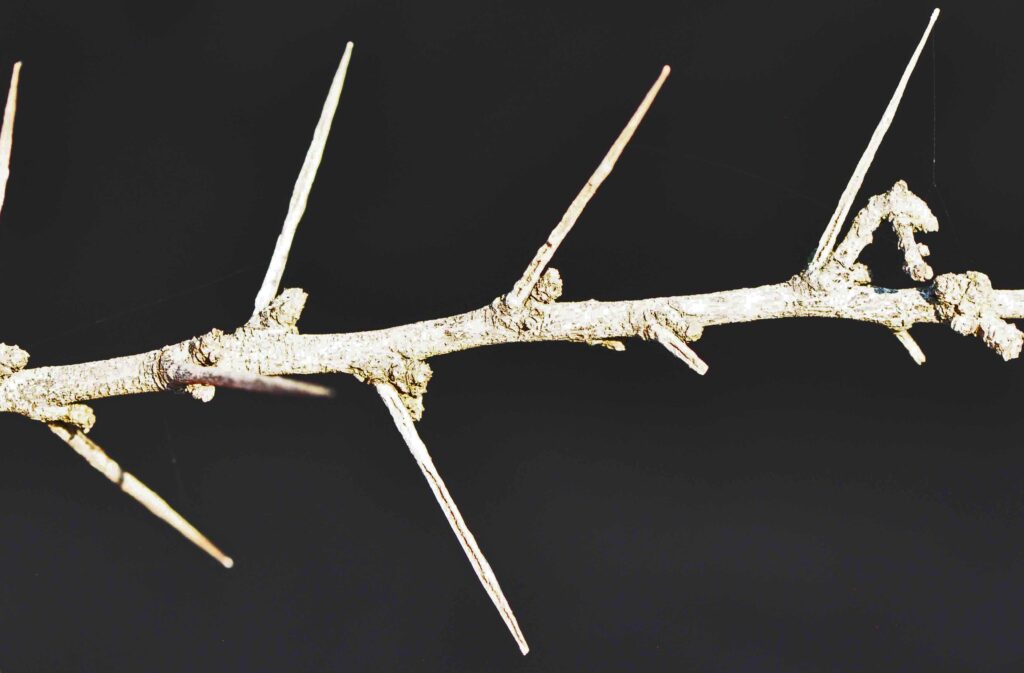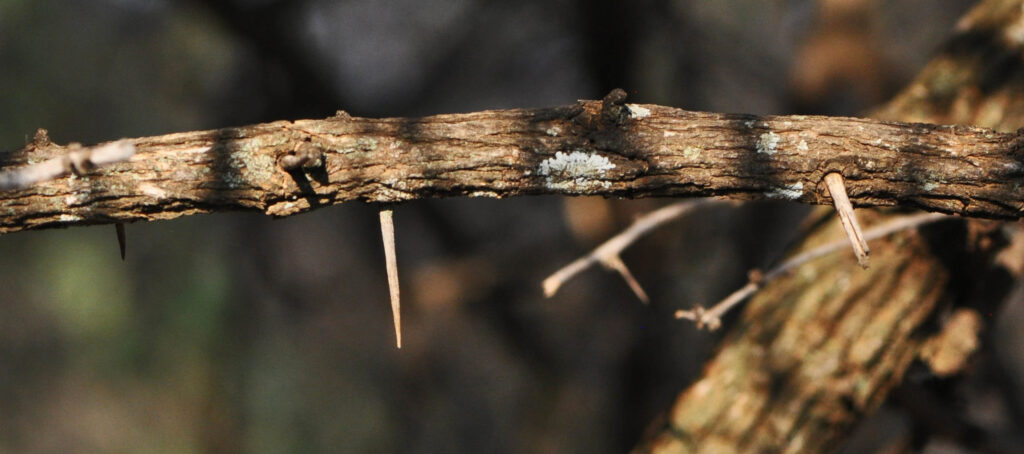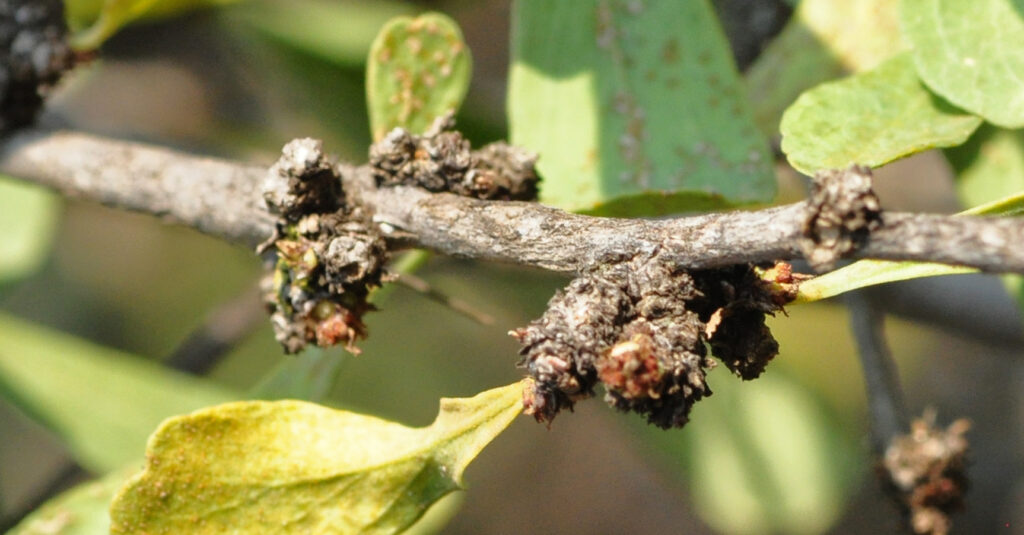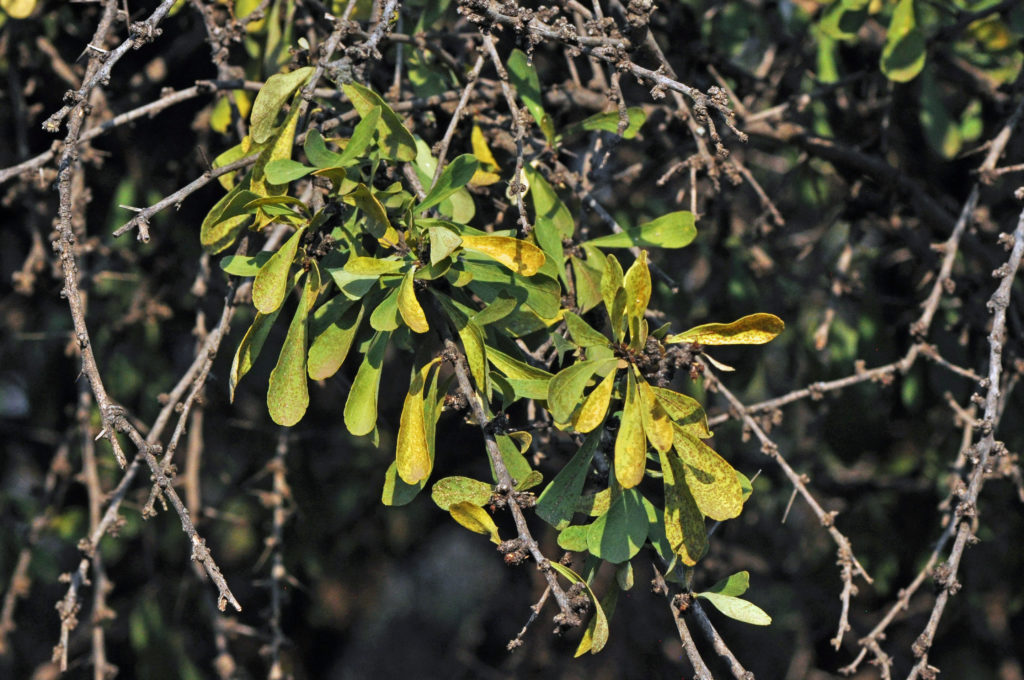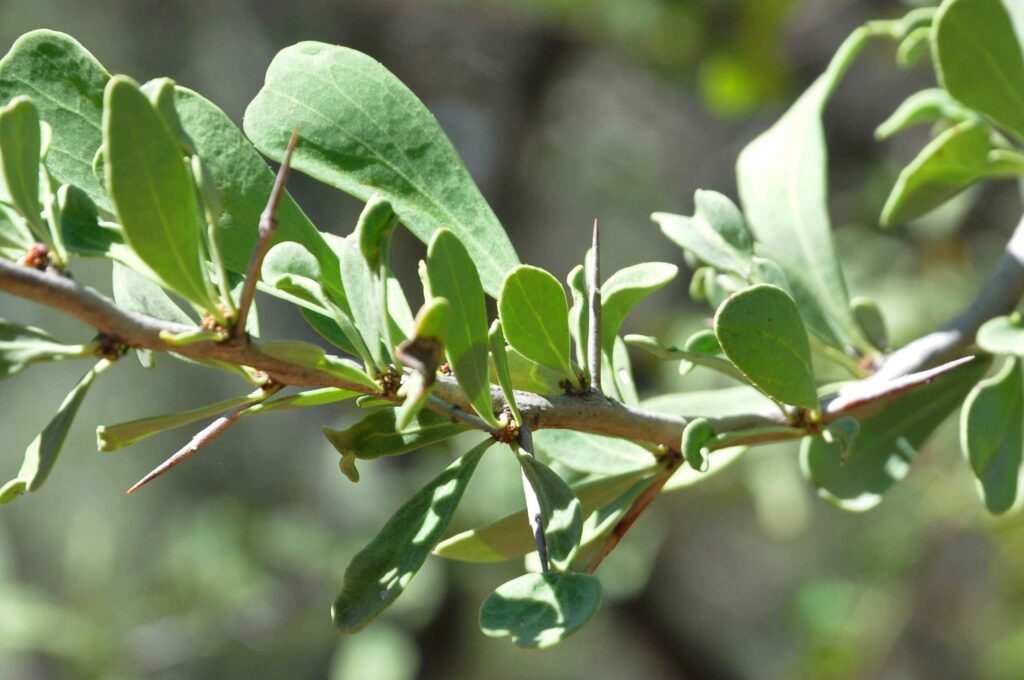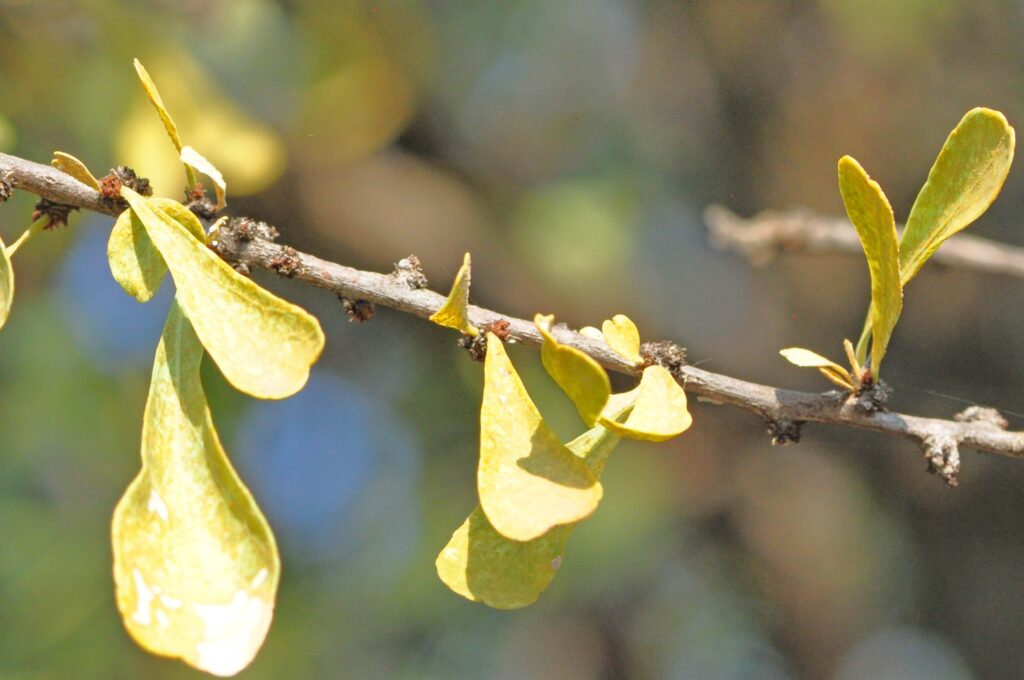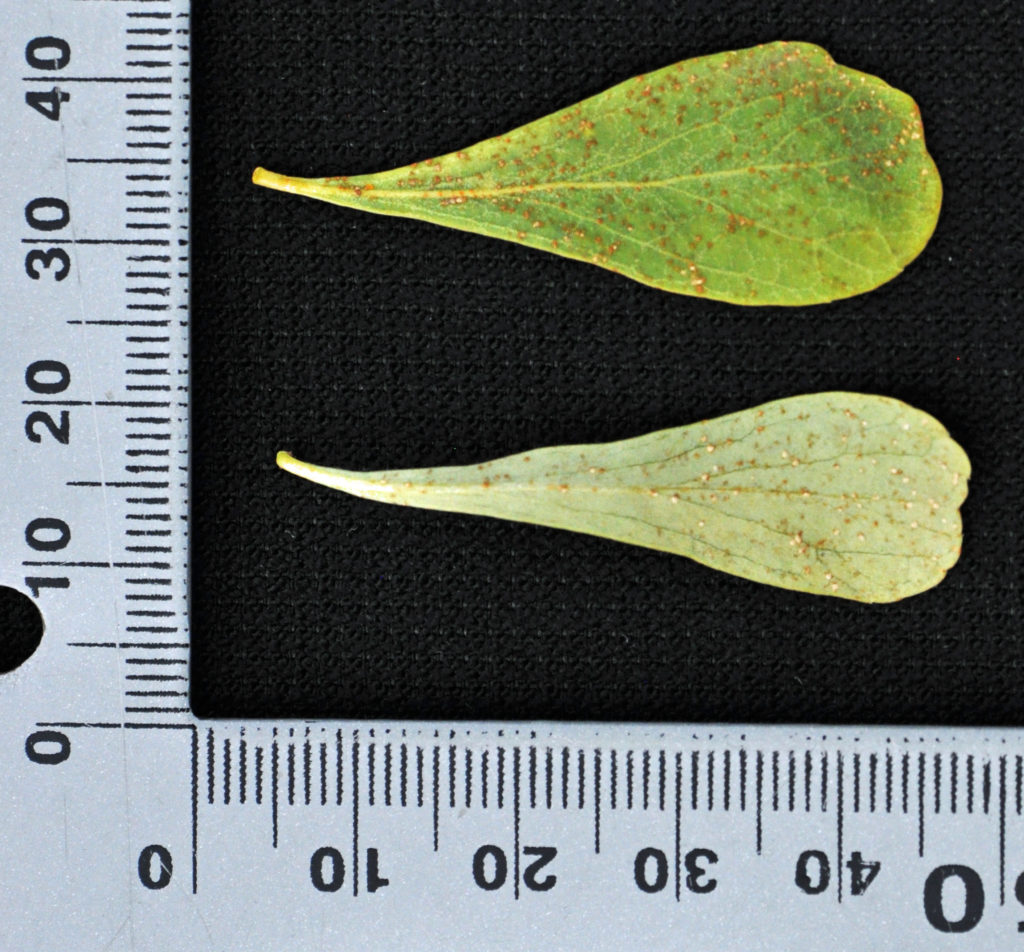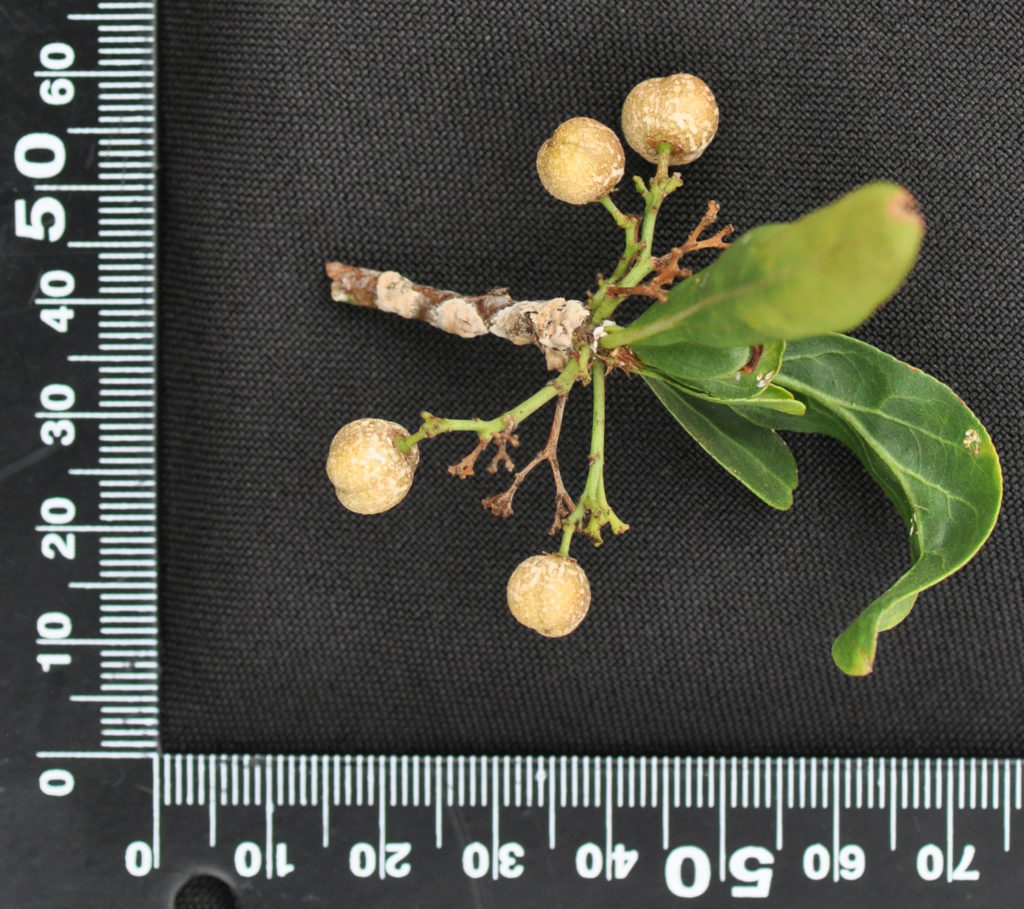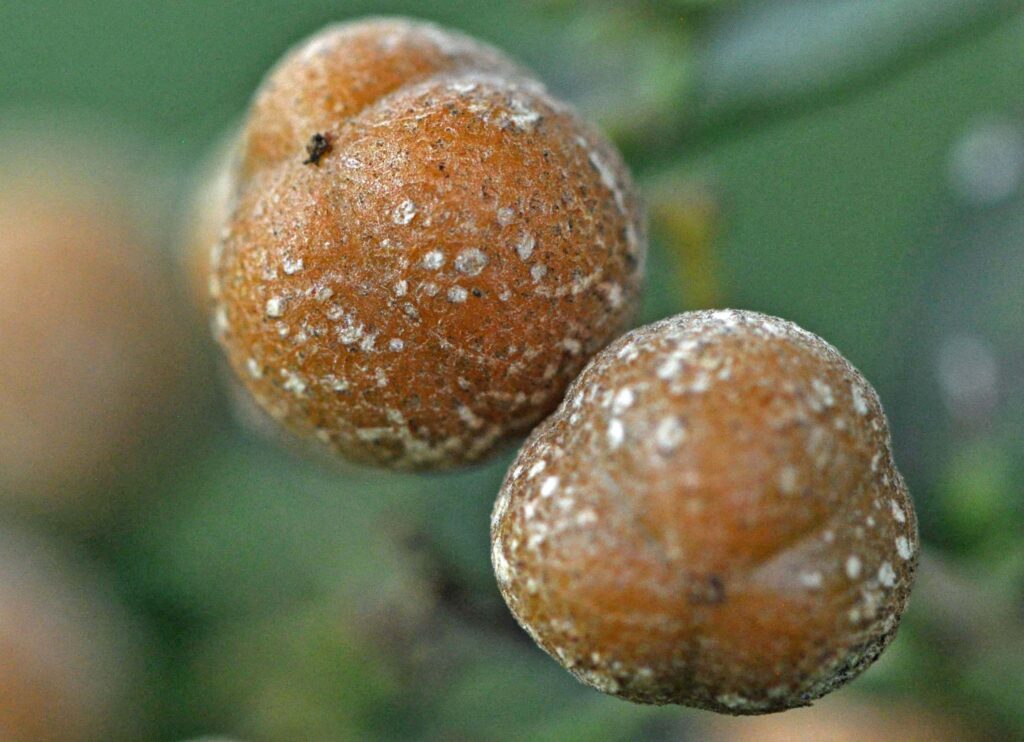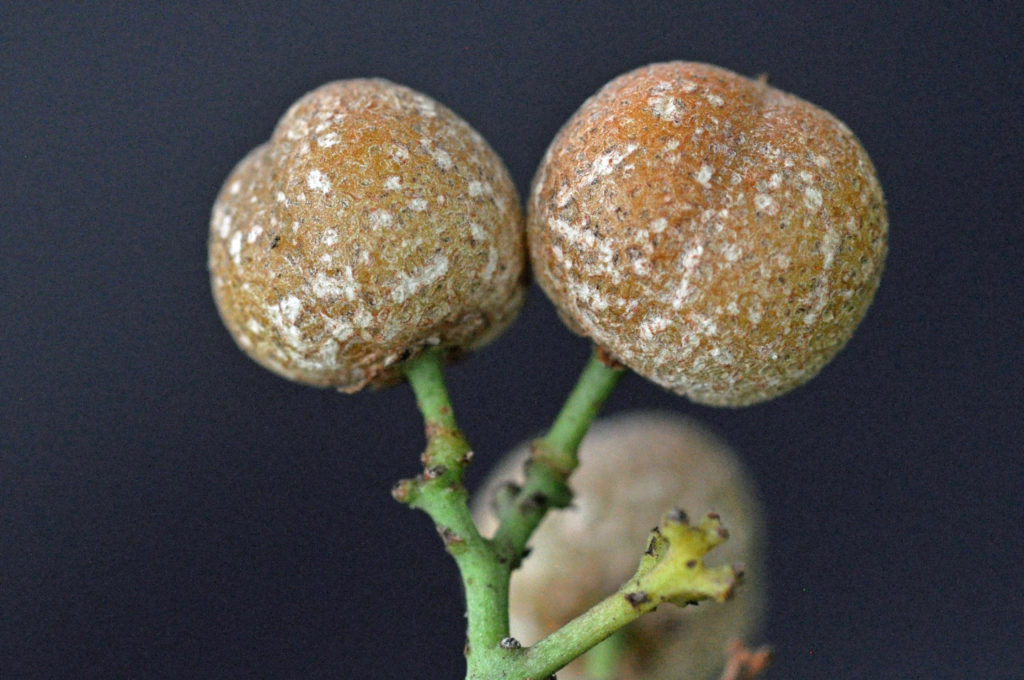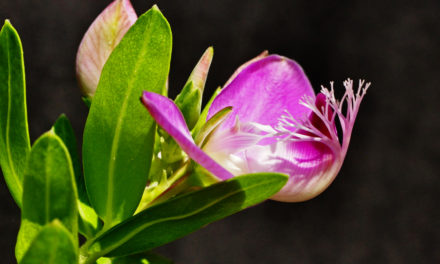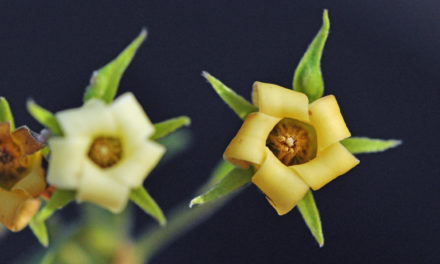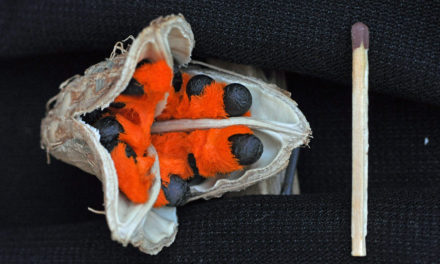General Info – summary
This dioecious, variable shrub or small Tree is usually up to 3m high. The trunk becomes deeply fissured. Stems have single sharp spines. Simple clustered Leaves are usually obovate. The pungent, whitish, 5-merous Flowers are in a dichasium. Male flowers have pistillodes and female have staminodes present. “Round” Fruit is a capsule with up to 4 reddish brown glossy seeds with arils.
Description
Gymnosporia buxifolia
Previous Names: Catha heterophylla, Celastrus buxifolius, Celastrus heterophylla, Gymnosporia angularis, Gymnosporia crataegiflora, Gymnosporia condensate, Gymnosporia uniflora, Gymnosporia wiidii, Maytenus cymose Maytenus heterophylla.
SA Tree No. 399.
Common names: (Afr) Gewone Pendoring, Gifdoring, Hondebos, Lemoendoring, Pendoring, Stinkblom, Stinkblombos, Stinkdoring, Stinkpendoring. (Eng) Common Spike-thorn, Spike-thorn, Stinking spike thorn. (isiXhosa) Umhlongwe, Umqaqoba. (isiZulu) Ingqwangane, Ingqwangane yehlanze, Yehlanze, Ubangalala, Usala, Usolo. (Northern Sotho) Mopasu, Sephatwa. (Setswana) Mothono, Motlhono, Motlhonu. (siSwati) Isihlanguo, Sihlangu Lesimnyama. (Tshivenda) Tshiphandwa. (Xitsonga) Shihlangwa.
Family: Celastraceae. (Spike-thorn, Staff-tree and Bitter-sweet family). There are currently close to 100 genera and in excess of 1 300 species. About 8 of these are in South Arica. Four are included on this website: Catha, Elaeodendron, Gymnosporia and Maytenus. This family has simple Leaves. The Flowers are usually small, actinomorphic (regular), bisexual or unisexual and sepals and petals are usually persistent. One or 2 Pollen sacs are present on each Anther. Each opens by a longitudinal slit. The Ovary is usually superior and usually has 2-5 locules. The Style is usually thick, and the Stigma has 2-5 lobes. Fruit varies.
Name derivation: Gymnosporia naked seeds – referring to the seeds that remain attached to the fruit after it has opened. buxifolia – Leaves similar to those in Buxus sempervirens (European boxwood in the family Buxaceae). There are about 30 species in the genus Gymnosporia in southern Africa. This species was first described more than 200 years ago and has undergone over 40 name modifications.
Conservation: National Status: L C (Least Concern). Assessed: 2005. (R.H. Archer and J.E. Victor).
Tree
With its rounded crown (photo 844), this evergreen Tree usually grows to 4m and occasionally up to 10m high. It is often a variable shrub and may be multi-stemmed from the base. With time, the light brown Bark becomes corky, darker brown, rough and flaking. The Trunk eventually becomes deeply fissured (photo 101) and may reach a diameter of greater than 40cm. The young, green terminal, varied length Branches tend to droop. They become reddish or light brown and age into being terete (circular in cross-section). They develop densely crowded branchlets or shoots of limited growth, in which the internodes elongate little or not at all, bearing reproductive structures and or leaves. Dead branches tend to remain on the tree. Insect galls (in plants are abnormal outgrowths of plant tissue caused by parasites like fungi, bacteria, insects and mites – arachnids – 8 legs) may thicken the branchlets (photo 107). The stems may have single, straight, sharp and slender or robust unpaired Spines that range from 1,3 to 10cm long (photos 106, 112 & under Leaves – 430). The spines may have attached leaves even flowers. Spines are more numerous in dry areas. Lenticels (usually raised corky oval or elongated area on the plant that allows the uncontrolled interchange of gases with the environment) may be visible.
- 844. 2018/02/22. Ernest Ullmann. Photo: David Becking.
- 851. 2018/02/22. Ernest Ullmann. Photo: David Becking.
- 102. 2016/09/13. Pilanesberg NP. Photo: David Becking.
- 101. 2016/09/13. Pilanesberg NP. Photo: David Becking.
- 106 2016/09/13. Pilanesberg NP. Photo: David Becking.
- 112. 2016/09/13. Pilanesberg NP. Photo: David Becking.
- 107 2016.09.13 Pilanesberg NP. Photo: David Becking.
Leaves
The Leaves are ovate, obovate (upside-down egg – photo 110), narrowly obovate-lanceolate or even rounded and are simple (have a single blade, which may have incisions that are not deep enough to divide the leaf into leaflets). They may be clustered or alternate in their arrangement on Brachyblasts (densely crowded branchlet or shoot of limited growth, in which the internodes elongate little or not at all, bearing reproductive structures and/or leaves – photo 111). Leaves may also be spirally arranged on new growth and occasionally occur on greenish spines. The leaf size is variable including 8 x 2,5cm, 6 x 4cm or 5 x 2cm but mature leaves are usually the same size on the same tree. The Apex is pointed, almost round or slightly notched (photos 450 & 110). The Base tapers and the visible Midrib may be indented. The thinnish, hairless Blade is dull-greyish green above and may be slightly lighter below (photo 110). The Veins are visible above and below. Towards the apex, the often entire (with a continuous margin, not in any way indented) Margin, may be untoothed, finely toothed or unevenly scalloped on the upper half. The Petiole (leaf stalk) is up to 0,5cm long. Stipules (basal appendages of the petiole) may be absent or are free, slender and taper to a point. Dead stipules may remain on the tree.
- 111. 2016/09/13. Pilanesberg NP. Photo: David Becking.
- 450. 2018/04/25. Nylsvlei. Photo: David Becking.
- 105. 2016/09/13. Pilanesberg NP. Photo: David Becking.
- 110. 2016/09/13. Pilanesberg NP. Photo: David Becking.
Flowers
The masses of white, cream or green, 5-merous Flowers usually, smell of decaying meat, are without scent or are sweet smelling. Each flower has a diameter up to 7mm. Flowers are located in an axillary position on dwarf spur branches and occur in dense clusters in a dichasium (cyme in which each flowering branch gives rise to two or more branches symmetrically placed). Flowers may also occur on the spines. The Calyx has 5 joined Sepals at the base. In the bud, they are imbricate (having regularly arranged, overlapping edges, as roof tiles or fish scales). Here the margin is fimbriated (having a boarder of hair-like or finger-like projections). The Corolla has 5 Petals that are also imbricated in the bud. These plants only appear to be bisexual but are Dioecious (unisexual floral structures with functional male and female parts on separate plants). In the Male Flowers, pistillodes (sterile pistils in a male flower) are present. The 5 Stamens alternate with the petals and arise at the base of the Disc (a more or less fleshy or elevated development of the receptacle). Here the Anthers are introrse (turned or faced inward or toward the centre of the flower). In the Female Flowers, Staminodes (sterile stamens) are present and there is a single Pistil (a unit of the Gynoecium, the female element of the flower, composed of the Ovary, Style and Stigma). The Ovary is partially emerged in the disc. There are usually 3 Ovules in each of the Locules. The single Style is short. Flowering times vary in different areas. (Dec- May).
Fruit
The small almost spherical, white to grey-brown, leathery, wrinkled, mature Fruit is about 1cm wide (photo 852). It is usually a 3-valved (photo 848) Capsule (a dry fruit resulting from the maturing of a compound ovary. This usually opens longitudinally at maturity by one or more lines of dehiscence). The capsule rests on a peduncle (stalk from a single flower – (green in photo 849). The capsule becomes wrinkled, tough and grey-brown when mature. A yellow Aril (an appendage or outer covering of a seed and may appear as a pulpy covering) is present. It develops from a stalk, the funiculus, connecting an ovule or a seed with the placenta). This yellow aril partially covers each of the up to 4 reddish brown glossy Seeds. These seeds may remain attached to the fruit for some time.
- 852. 2018/02/22. Ernest Ullmann. Photo: David Becking.
- 848. 2018/02/22. Ernest Ullmann. Photo: David Becking.
- 849. 2018/02/22. Ernest Ullmann. Photo: David Becking.
Distribution & Ecology
This is one of the most common and widespread of our indigenous shrubs or Trees. This pioneer species occurs in disturbed places and in all provinces in South Africa. It also grows in Lesotho, Swaziland, Mozambique, Zimbabwe (widespread), Botswana and Namibia extending northwards to reach Angola, Zambia, Congo, Sudan, Ethiopia and Madagascar. These plants commonly occur in a wide variety of places, including open veld, forest fringes, on rocky outcrops, dry and, wooded grasslands and may be associated with termite mounds and limestone. They usually occurs up to an altitude of about 1 500m. Plants are frequently scattered, but in parts of the eastern Karoo, they are widespread. The carrion odour emitted by some flowers attracts pollinating insects including bluebottle flies (Calliphora vomitoria). Large numbers of these flies may colour the tree blue and can be heard, as well as seen. Birds like the Cape White-eye eat the Fruit and contribute to seed dispersal. Giraffe, nyala, impala and kudu browse Leaves. Black Rhino consume the leaves and the Bark. The fact that the plant can survive dry and coastal conditions (often scrub-like) as well as low temperatures enables it to be so widespread.
Ethnobotany
The Wood is hard, dense, close grained and strong. The wood colour varies from almost white to yellow, brown or even pink. It is used for tool handles and, when big enough, for turning on a lathe. Stools, spoons and knobkerries can be fashioned from the wood, which is also used for fuel. The Spiny plants make effective animal barricade. The spines are also used for needles. The Sap may be/is slightly toxic. Handles made of this wood may irritate the skin. The Fruit is edible. The smell of flowers can be unpleasant (for us). Goats browse leaves and bark. The plant is widely used in local medicine and magic.
References
Archer, R.H. & Victor, J.E. 2005. Gymnosporia buxifolia (L.) Szyszyl. National Assessment: Red List of South African Plants version 2020.1. Accessed on 2023/07/08.
Boon, R. 2010. Pooley’s Trees of eastern South Africa. Flora and Fauna Publications Trust, Durban.
Burrows, J.E., Burrows, S.M., Lotter, M.C. & Schmidt, E. 2018. Trees and Shrubs Mozambique. Publishing Print Matters (Pty) Ltd. Noordhoek, Cape Town.
Coates Palgrave, M. 2002. Keith Coates Palgrave Trees of Southern Africa, edn 3. Struik, Cape Town.
Lawrence, G. H. M, 1951. Taxonomy of Vascular Plants, The Macmillan Company, New York. Tenth Printing 1965.
Palmer, E. & Pitman, N. 1972. Trees of southern Africa, Balkema, Amsterdam, Cape Town.
Schmidt, S. Lotter, M. & McCleland, W. 2002. Trees and Shrubs of Mpumalanga and the Kruger National Park.
van Wyk, B. & van Wyk, P. 1997 Field guide to Trees of Southern Africa, Struik, Cape Town.
Thanks to Mrs E Visagie for drawing my attention to the tree in Ernest Ullmann Park.
http://pza.sanbi.org/gymnosporia-buxifolia
https://en.wikipedia.org/wiki/Gymnosporia_heterophylla
http://posa.sanbi.org/flora/browse.php?src=SP

